 "QUANTUM SHOT" #332 "QUANTUM SHOT" #332link You thought Ekranoplans were cool? These are not bad, either. In our first article "Incredible Snowmobiles" we covered some of the most fascinating snow vehicles, including the giant Polar Regions exploring behemoths. In this article we'll focus on exotic Soviet military snow vehicles, and some civilian and scientific applications of these machines.  (source: TM, Russia 1970) The image above shows Russian huge all-terrain vehicle "Kharkovchanka" (made by Kharkov tractor factory), meant to conquer the Arctic and the Antarctic in the 1950s. Its truly gargantuan scale did not prevent it from moving at 40 km/h and climbing 30 degree inclines.  "Kharkovchanka" helped Soviet expeditions to reach the South Pole multiple times, and according to some sources, still remains in use at Russian polar stations. They praise the vehicle as the best ice/snow transportation ever made. This page details Russian South Pole Traverse, using five tractors and ten towed sledges: 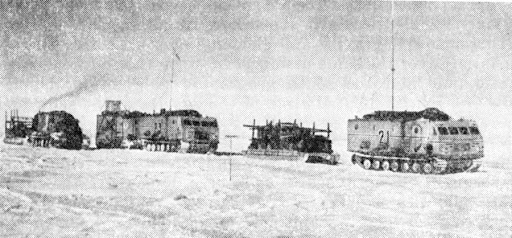 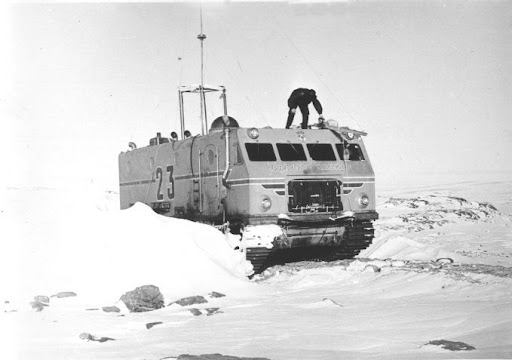 It's a Cold, Cold, Cold War Any war on Russian territory always comes down to who has the best ability to cope with extreme winter conditions and the absence of any kind of roads. Add to it the huge distances to cover and no infrastructure to help you out if anything breaks down. Well, with these "aero-sled" prototypes (and a bottle of vodka) you can get anywhere, even in seemingly infinite Siberia. 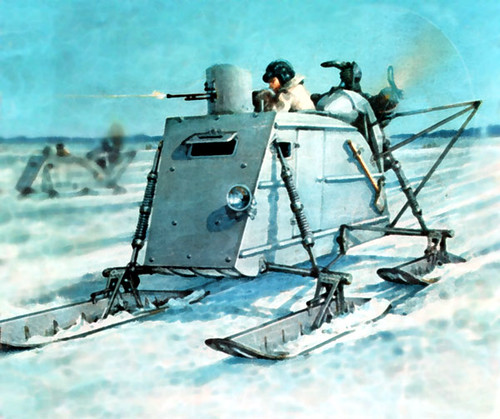 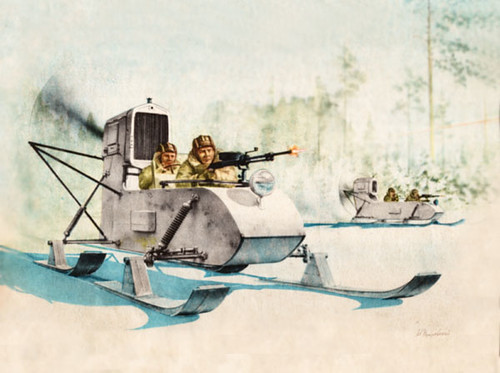 The first aero-sled divisions were supplied to Russian Army in 1941 and battled against Nazis in the winter of 1942. The Germans were amazed to see such winter mobility, being hopelessly mired in snow & mud covered Russian countryside themselves. RF-8 model was especially successful, being the result of many 1932-1941 prototypes, designed by engineer M. Veselovski. 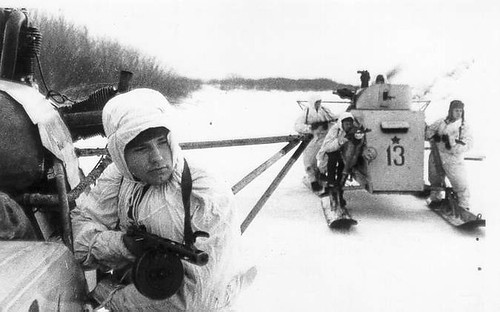  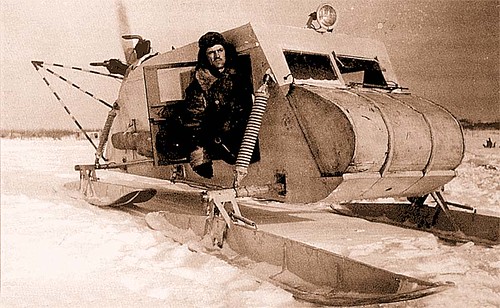  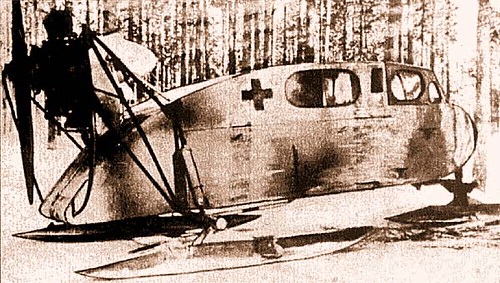 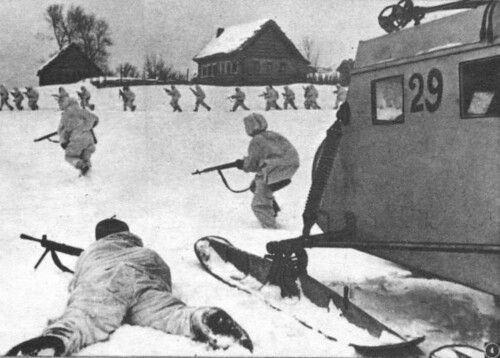  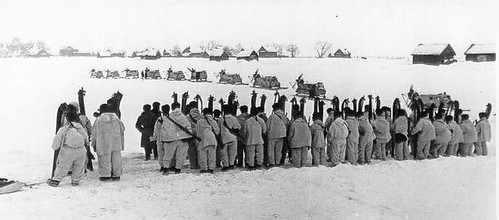 (images are from Oleg Tulnev and I. Yuvenaliev collections) One nice feature of these models was the use of a normal automotive engine, not the custom airplane one. It was easy to repair and had a propeller, made from steel, not wood - increasing its ability to break through dense snow-covered forest. 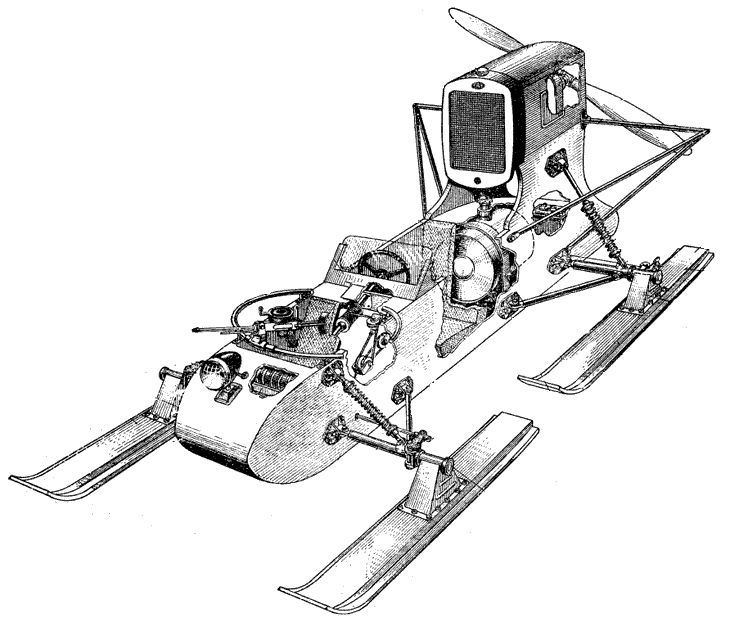 (drawing by Seleznev, Timakov, Timchenko) The other model used against German invasion: NKL-26 - 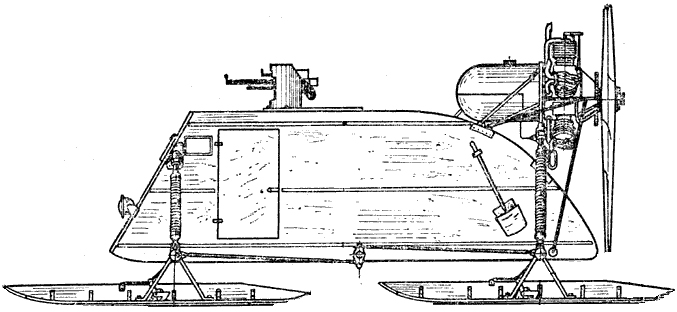  The first prototypes were developed as far back as 1919 by a bureau of "TZAGI" and "NAMI", and were successfully used in World War One, in suppressing the Krondtstadt uprising, for example. The following drawings show the 1930s model - ANT-4, used in mail delivery on remote routes in Siberia, and even as a support vehicle in Arctic expeditions.  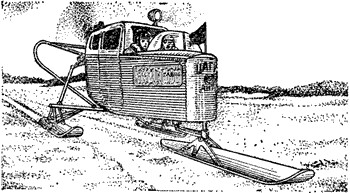 (drawings by I. Yuvenaliev) These military snowmobiles from World War Two were not very fast (average speed was 25 km/h), and had comparatively light armor, so they did not compete with tanks, but provided instead a highly mobile (off-road) unit, capable of surgical strikes in enemy territory. 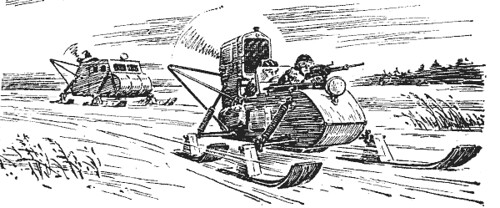 It is interesting to note that Americans had a little different idea for the same military use: 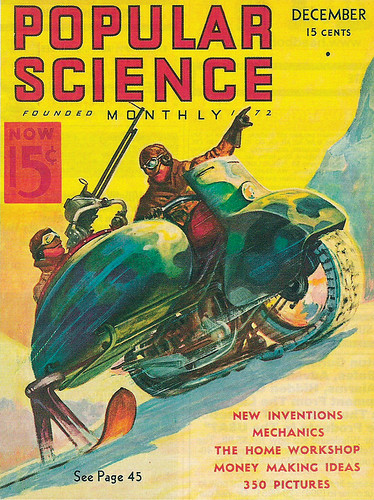 (Cover of Popular Science, Dec. 1936) Tatra V855 (1942) - Nazi's answer to Soviet snowmobiles Faced with the prospect of the harsh Soviet winter, the Nazis decided to experiment with snowmobiles, as well. Tatra was one of the many firms that built prototypes. This aerodynamic vehicle was powered by modified T-87 engine; only 2 vehicles were built and they never went into production. Note the drum roller in the back, used when climbing uphill. It also drove the vehicle in city traffic and functioned as a brake. 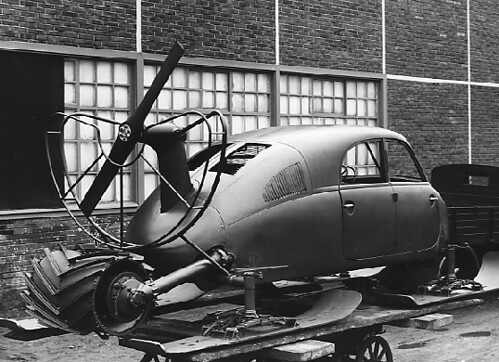 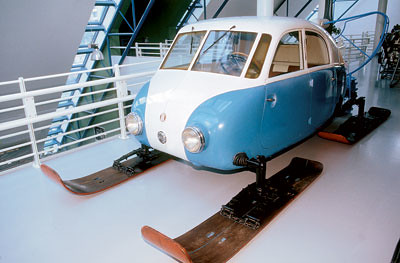 (image credit: tatraworld) When their own prototypes did not materialize, the Nazis captured Soviet-made aero-sledges and happily used them themselves: 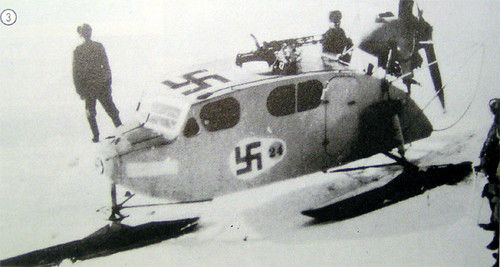 (images credit: allwheel) Dozens of Models, Wide-Spread Use It may come as a surprise to technology buffs today, but the history of Soviet aerosled-snowmobile industry is rich and varied. Dozens of various models were built, used extensively in scientific exploration and on the battlefield. The reason for such spurt of creativity is the strong support of the highest Communist officials, starting shortly after the Revolution. Here is a sample of only a few (from a wide catalog) of models: 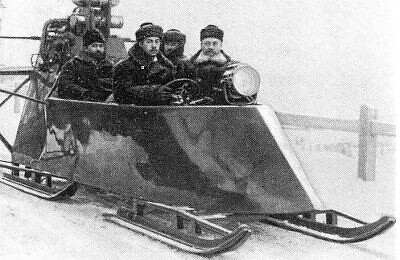 Aero-sled KM-4 "Purga" (the Snowstorm)   (drawings by I. Yuvenaliev) ASD-400 model: (widely used in Siberia) 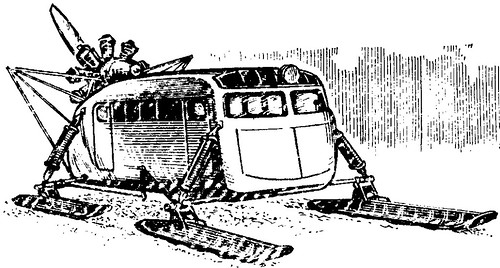 GAZ-98 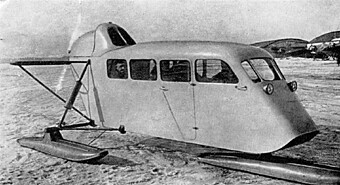 and a few more war-time military models: NKL-26 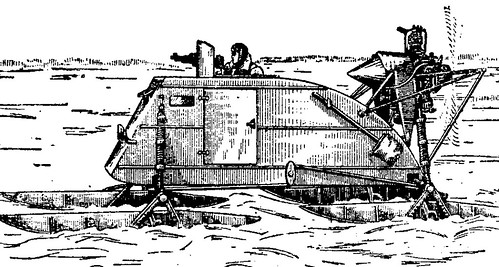 NKL-16 (used mostly as a transport vehicle) 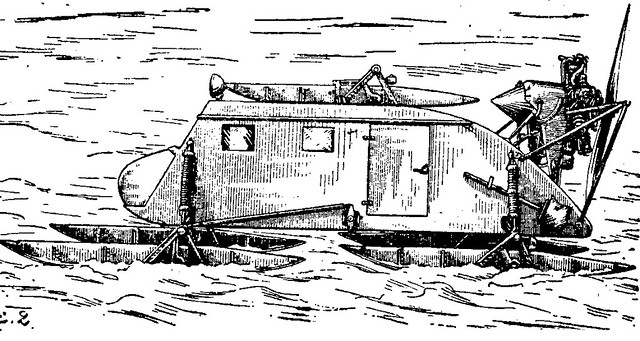  The wheeled version for the summer: 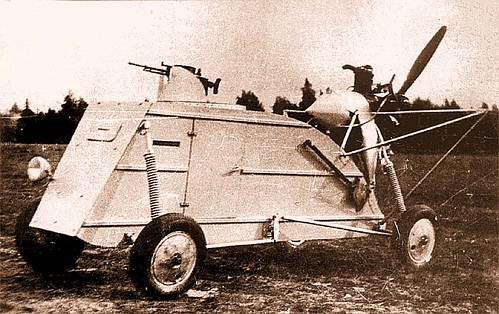 More and more variations: 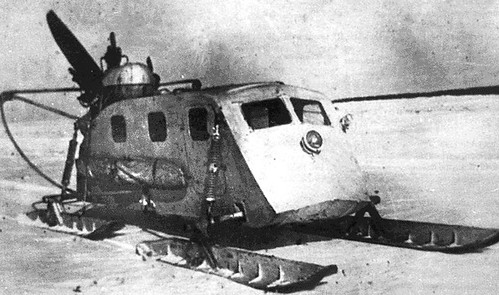 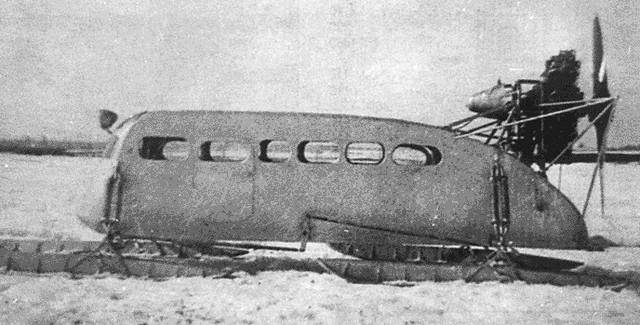 "Sever-2", Post-war neat aero-sled Based on the Soviet post-war car "Pobeda", "Victory" (which in turn was probably copied from the post-war German "Opel" model), this aero-sled was designed in 1959 by engineer I. Kamov, famous for his helicopters. Again, this vehicle was widely used for mail delivery and passenger transportation in remote Siberian regions. 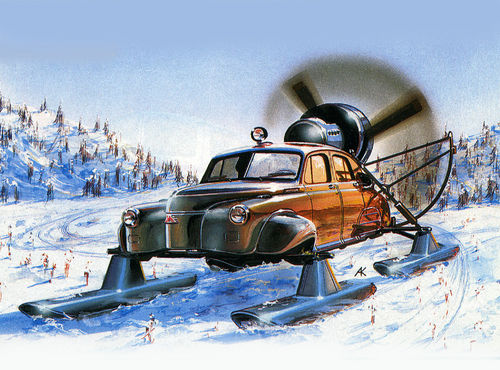 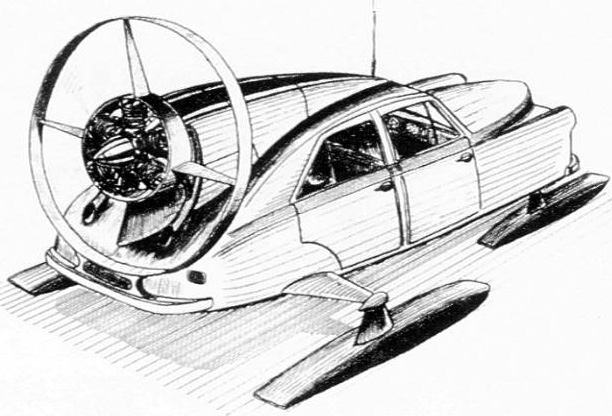 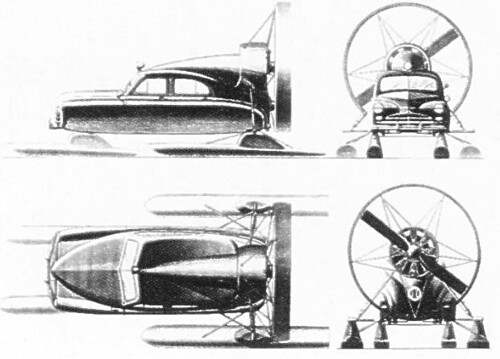 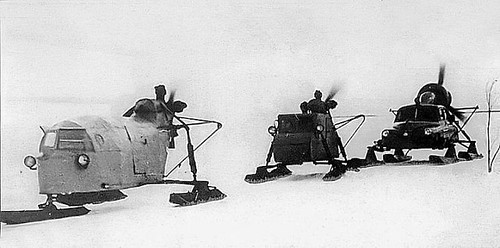 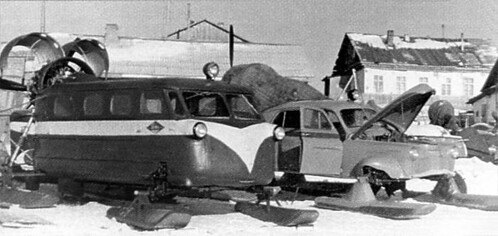 (images credit: gaz20.spb.ru) 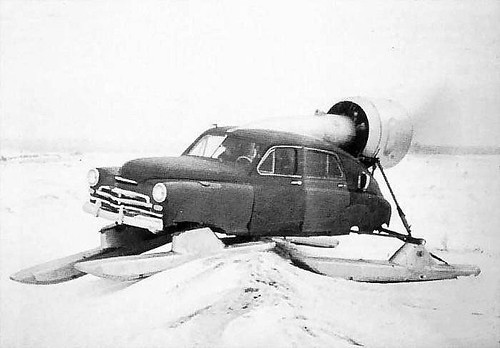 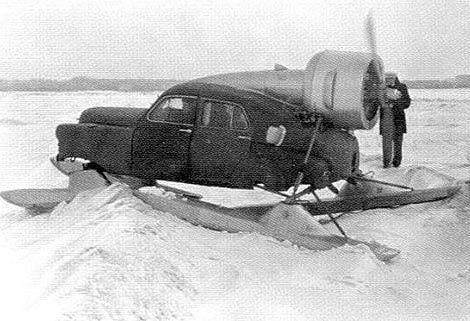 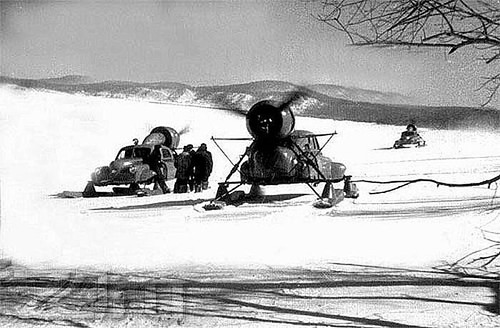 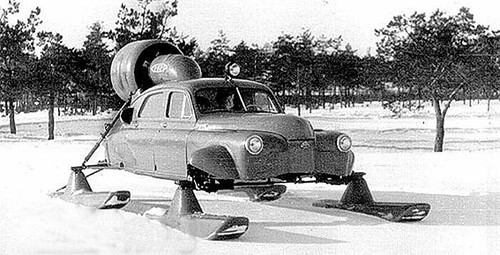 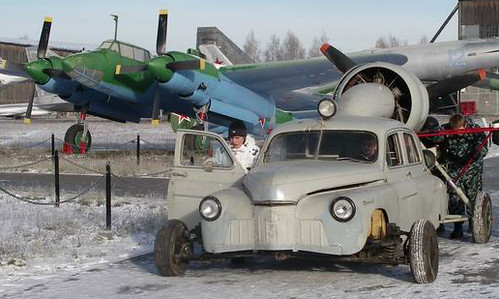 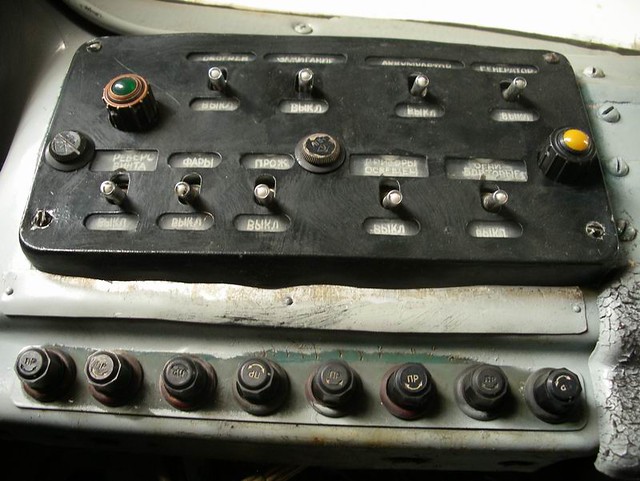 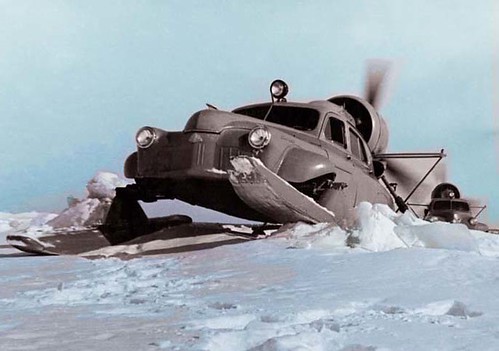 (images credit: alluneed.ru) Rare Off-road Model for the Soviet Youth (built in the 60s) "Veterok" ("the swift wind") model remained in concept stage for a very long time (due to the famous Soviet red tape). Only a few prototypes were built, and unfortunately never achieved mass production... It would've been a very cool alternative to Jeeps, loved by all off-road enthusiasts, I dare say: (click to enlarge)  (source: TM, Russia 1968) KA-30 Snowmobile, a van/bus/suburban SUV on skis The concept is described as a "dream of the Soviet youth from the polar regions". It was a great vehicle (while it stayed in production): powerful, swift, available in different modifications.  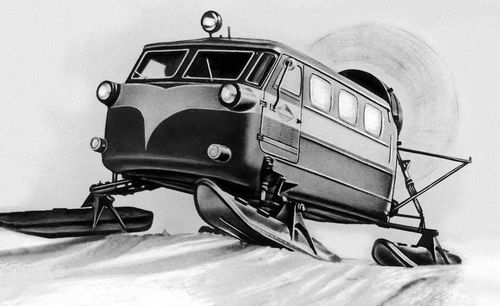 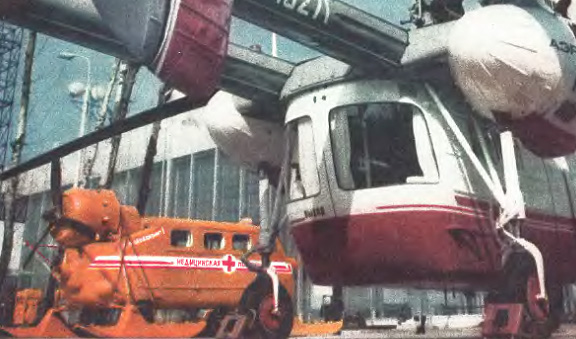 Various layouts for business, passenger transportation and ambulance use:  Apparently it could also be used in combination with floating and hydro-planing equipment (not to be stopped by waterways and rivers, which are sometimes the only transportation option) -  (source: TM, Russia 1969)  Some surviving models one could still find in use today: 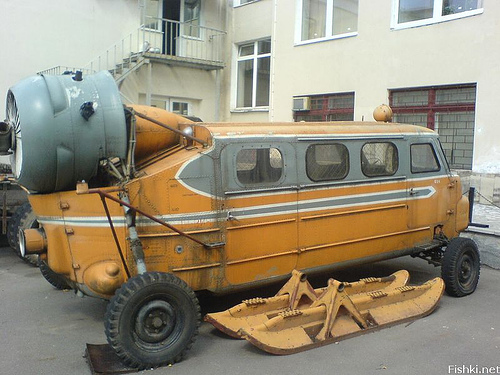 Keeping in mind that the amount of snow in Russia can be simply unbelievable, these transportation options are more than welcome: 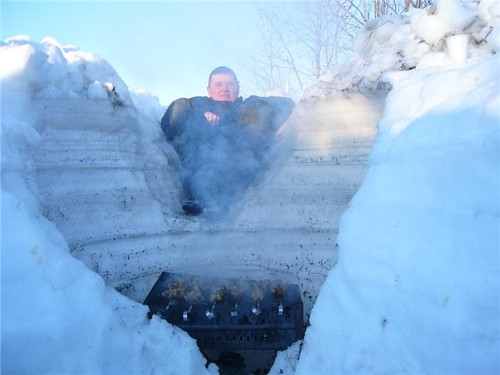 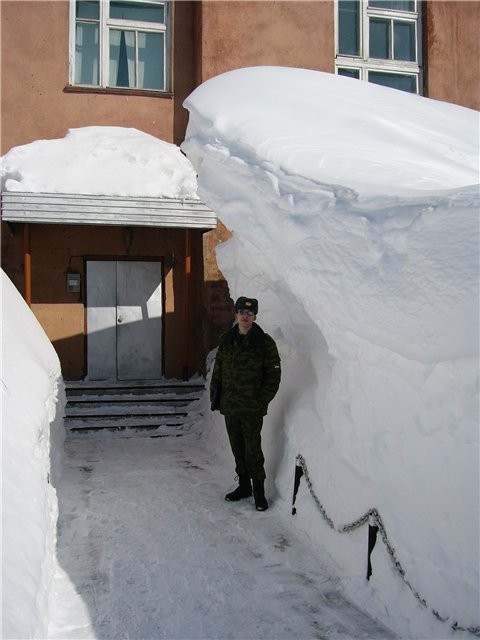 It is a testimony to the ingenuity of Russian designers and the general ineptitude of Soviet regime to follow-through on any great consumer product, that none of these awesome snowmobile models were made in truly big numbers into the 70s and 80s. Most Bizarre All-Terrain Vehicle Ever Conceived We have to finish with this idea, from the Soviet technology magazine in 1937. Engineer Georgi Pokrovski had the ultimate solution for conquering polar wastes: a hybrid of sea-going vessel with a giant tracked mobile base. He called it an "Arctic Amphibian Tank" and described it as 1000-tons fortress which will navigate the icy plains with tracks and use them to propel the ship through the water as well... 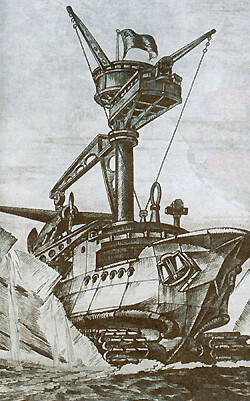 Sources: Armor Kiev, Gaz20 Permanent Link... Category: Technology,Vintage, Military Related Posts: Incredible Snowmobiles, Ekranoplans |
RECENT ARTICLES:

|
Visual Caffeine #8 Visual Caffeine, Issue 8 A thrilling blend of art, myths and technology |

|
Visual Caffeine #7 Visual Caffeine, Issue 7 A thrilling blend of art, myths and technology |

|
Art Deco Imperial Dreams: Art Deco Update Wings, Gears, & Glamorous Ladies |

|
1970s SciFi DRB Pics-of-the-Day Grand Space Adventure 1970s Art |
"Dark Roasted Blend" - All Kinds of Weird and Wonderful Things, Discovered Daily!"
DRB is a top-ranked and respected source for the best in art, travel and fascinating technology, with a highly eclectic presentation. Our in-depth articles in many categories make DRB a valued online magazine, bringing you quality info and entertainment every time you visit the site - About DRB
Connect with us and become part of DRB on Facebook and Twitter.
YOUR COMMENTS::
|
|
|
|
SF ART & BOOK REVIEWS: Don't miss: The Ultimate Guide to NEW SF&F Writers! Fiction Reviews: Classic Cyberpunk: Extreme Fiction Short Fiction Reviews: Lovecraft's "At the Mountains of Madness" (with pics) New Fiction Reviews: The Surreal Office |
READ OTHER RECENT ARTICLES:

|
Abandoned, Dieselpunk DRB Pic-of-the-Day Abandoned: Streamlined Three-wheeler |

|
Visual Caffeine #6 Visual Caffeine, Issue 6 A thrilling blend of art, myths and technology |

|
Visual Caffeine #5 Visual Caffeine, Issue 5 A thrilling blend of art, myths and technology |

|
Hellish Weather on Other Planets
Wild, Untamed, and Uncut |

|
Medieval Suits of Armor
Metal Body Suits vs. Weapons of Medieval Destruction |

|
World's Strangest Theme Parks
Amusement to the (twisted) extremes! |

|
Enchanting Victorian Fairy Tale Art
"Then world behind and home ahead..." |

|
Adorable Pedal Cars
Collectable Pedal Vehicles Showcase |

|
Japanese Arcades: Gundam Pods & Other Guilty Pleasures These machines have gone up to the next level |

|
Modernist Tallinn Architecture Delicious blend of old and new! |

|
Early Supercomputers: A Visual Overview "Computers in the future may weigh no more than 1.5 tons" |

|
Futuristic Concept Cars of the 1970-80s French, Italian & Japanese rare beauties |

|
Epic 1970s French Space Comic Art DRB Time-Slice: Valérian and Laureline |

|
The Trees Are Escaping! The Abandoned Prison in French Guiana "Great Escape" from the Devil's Island |
|
FULL ARCHIVES (with previews, fast loading): 2022/16 2015/14 2013 2012 2011 2010 2009 2008 2007 2006 Link Lattes Feel-Good & Biscotti Issues |
|
CATEGORIES:
Feel-Good! | airplanes | animals | architecture | art | auto | boats | books | cool ads | famous | futurism | food
gadgets | health | japan | internet | link latte | military | music | nature | photo | russia | steampunk
sci-fi & fantasy | signs | space | technology | trains | travel | vintage | weird | abandoned













































8 Comments:
That nazi aerosled is not nazi but Finnish. Finnish army was well prepared for snow operations and the use of the swastika in its armed forces comes earlier than the nazis http://en.wikipedia.org/wiki/Swastika#Finland
Karamazov is absolutely right. The aerosled is Finnish. The German Wehrmacht never used the swastika on their vehicles. Trucks, tanks kubelwagens, etc., always used the standard German Cross.
Only in need, when there was aerial support, did they put a flag (with the swastika) over the tanks and trucks to signal them to Luftwaffe.
The Finnish used a blue swastika over a white background, as can be perceived from the black-and-white photograph.
in case you were wondering, the three b&w pictures with the different variants of the one snow mobile , written in russian and translated as follows : passenger variant, business
variant, and "sanitary" variant ( or sterile).
great stuff. i wish that last tank/ship had been made.
An interesting, but topical aside is the US prewar entry for the Antarctic. The Antarctic Snow Cruiser. http://en.wikipedia.org/wiki/Antarctic_snow_cruiser
Somewhere it now seems at the bottom deep sea buried.
Great post! Don't forget Bombardier's beautiful snow buses, some of which are still used for ice fishing in Canada. http://i174.photobucket.com/albums/w90/sugarzebra/BRPBusPOTN.jpg
Pobeda = BMW?
Rubbish. Those are Plymouths. The grille styles are distinctive, even when replaced by sheet metal to avoid radiator freezing.
Ric Locke, learn autohistory =)
This "Pobeda" not Plymouths.
The other obvious difference between the Finnish and Nazi use of the Swastika is that the Finnish version has all the bars either horizontal or vertical, while the Nazi version is set at 45 degrees.
Post a Comment
<< Home